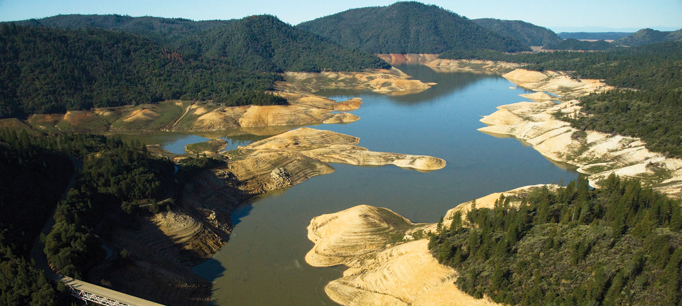This is part of a continuing series on the impact of the drought.
In both houses of the California Legislature, multiple versions of a new water bond are being amended and debated to make the June deadline for replacing the $11.1 billion bond now slated for the November election. Originally intended for the November 2010 ballot, the bond has been twice delayed due to concerns it would not pass. The March 2014 PPIC Statewide Survey showed a bump in public approval since last year, with 50 percent of likely voters now saying they would approve it, up from 42 percent in March 2013. Survey responses to other questions about water suggest that this rise in support likely reflects concerns over the drought. For example, a record share of residents (15%) named water as the most important issue facing the state (up from 2% a year earlier).
As the legislature considers the final size and shape of this new bond, it is worth reviewing how bond funds have been used in the past and the areas that most need bond support in the future.
 The 2000s were a big decade for water bonds, with approved funds totaling almost three times as much as the three previous decades combined. Even so, bond funds currently only contribute about $1 billion a year to the water sector, a small portion of the $30 billion that is spent annually on the state’s water system.
The 2000s were a big decade for water bonds, with approved funds totaling almost three times as much as the three previous decades combined. Even so, bond funds currently only contribute about $1 billion a year to the water sector, a small portion of the $30 billion that is spent annually on the state’s water system.
Moving forward, new bond funds are likely to be more limited (as shown by the current bond’s bumpy road to approval), so it makes sense to focus them on areas that lack sustainable and reliable funding sources. As we show in our report Paying for Water in California, these areas include small water systems in rural, low-income communities, flood protection, stormwater pollution management, aquatic ecosystem recovery, and integrated water management. The bond funds approved in the 2000s have been spent overwhelmingly in these areas, yet the need is still great.
 For activities that more readily raise funds from local ratepayers—such as water supply and wastewater management—future bond support should be limited to projects that generate broad public benefits. This might include water supply projects that promote better integration of our water system (e.g., by capturing stormwater, which can improve both water supply and prevent pollution) or ecosystem recovery (e.g., by improving the quality or quantity of water to support fish and wildlife).
For activities that more readily raise funds from local ratepayers—such as water supply and wastewater management—future bond support should be limited to projects that generate broad public benefits. This might include water supply projects that promote better integration of our water system (e.g., by capturing stormwater, which can improve both water supply and prevent pollution) or ecosystem recovery (e.g., by improving the quality or quantity of water to support fish and wildlife).
Even if a new water bond passes this fall, California will need to find other ways to pay for small system drinking water quality, critical improvements to flood protection, stormwater management, aquatic ecosystems, and integrated water management. As part of its deliberations, the legislature will need to think beyond bonds, and consider new statewide fees or special taxes—such as a small surcharge on water use or a small increment on the sales tax—to help fill these gaps with a reliable revenue stream.



